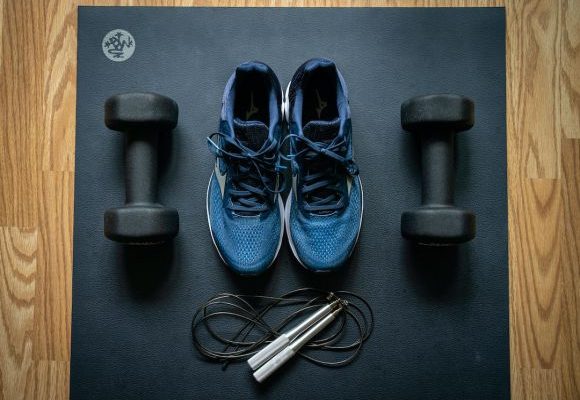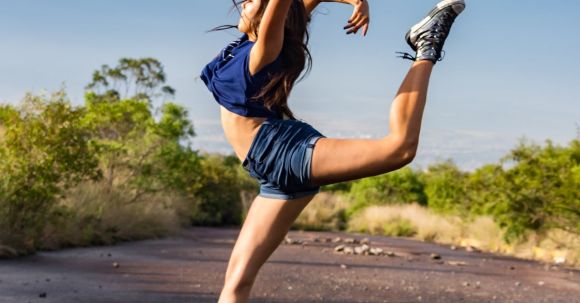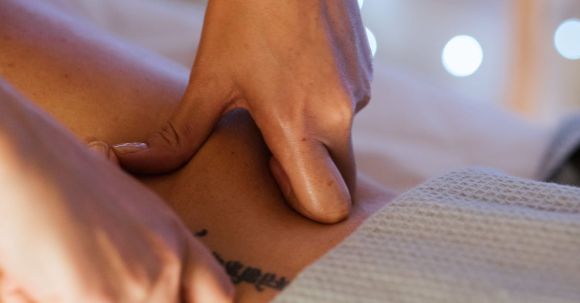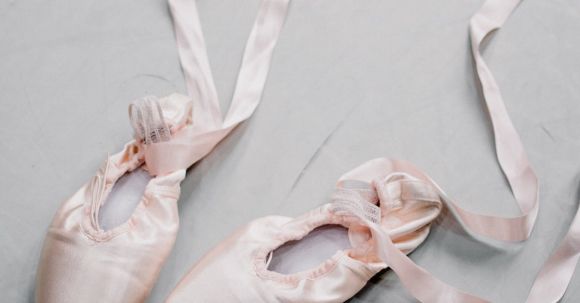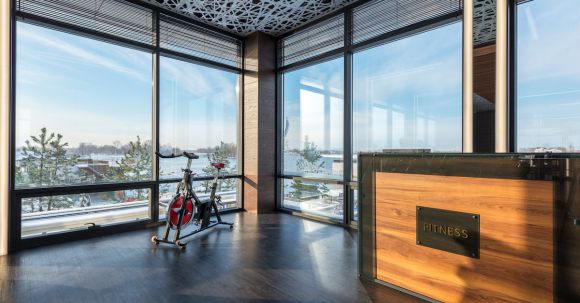Creating a home gym doesn't have to break the bank. With a little creativity and resourcefulness, you can set up a functional and affordable workout space right in the comfort of your own home. In this article, we will explore some practical tips on how to create a home gym on a budget.
Fitness tips and advice
Staying properly hydrated is crucial for overall health and well-being, especially during workouts. When we exercise, our bodies lose water through sweat, and if we don't replenish those fluids, it can lead to dehydration. In this article, we will explore the importance of proper hydration during workouts and the impact it has on our performance and recovery.
Optimal Performance
Hydration plays a vital role in optimizing our performance during workouts. When our bodies are properly hydrated, our muscles and joints can function at their best, allowing us to perform exercises with greater ease and efficiency. It also helps maintain our body temperature, preventing overheating, which can hinder our performance and lead to fatigue.Improved Endurance
Proper hydration is directly linked to improved endurance. Dehydration can cause a decrease in blood volume, making it harder for our hearts to pump oxygen-rich blood to our muscles. This can lead to early fatigue and a decline in our workout performance. By staying hydrated, we can maintain adequate blood volume, ensuring that our muscles receive the oxygen they need to keep going, ultimately enhancing our endurance.Reduced Risk of Injury
When we exercise, our bodies are more susceptible to injuries such as muscle cramps, sprains, and strains. Dehydration can increase the likelihood of these injuries occurring. Proper hydration helps lubricate our joints, reducing friction and minimizing the risk of joint-related injuries. Additionally, it keeps our muscles well-hydrated, making them less prone to cramping and spasms.Faster Recovery
Proper hydration is crucial for post-workout recovery. During intense exercise, our bodies break down muscle tissues, and hydration plays a crucial role in repairing and rebuilding them. Adequate water intake helps transport essential nutrients to our muscles, aiding in their recovery process. It also aids in the removal of waste products, such as lactic acid, which can cause muscle soreness. By staying hydrated, we can speed up our recovery time and be ready for our next workout sooner.Signs of Dehydration
Recognizing the signs of dehydration is essential to prevent its negative effects. Common symptoms include dry mouth, dizziness, fatigue, decreased urine output, and dark-colored urine. If you experience any of these symptoms during a workout, it is crucial to stop exercising, rehydrate, and rest. Ignoring these signs and pushing through can lead to more severe complications, such as heatstroke or heat exhaustion.Tips for Proper Hydration
To ensure proper hydration during workouts, here are some tips to keep in mind: 1. Drink water before, during, and after your workout: Start hydrating before you exercise and continue to drink fluids throughout your session. Afterward, replenish any lost fluids by drinking water or electrolyte-rich beverages. 2. Listen to your body: Pay attention to your body's thirst signals. If you feel thirsty, drink water immediately. 3. Monitor urine color: A light, pale yellow urine color indicates proper hydration, while a darker color suggests dehydration. 4. Consider electrolyte intake: During intense workouts or prolonged exercise, it's essential to replace electrolytes lost through sweat. Consuming sports drinks or electrolyte-enhanced waters can help maintain electrolyte balance.Conclusion
Proper hydration is vital for maximizing our workout performance, improving endurance, reducing the risk of injuries, and promoting faster recovery. By staying hydrated and listening to our bodies, we can optimize our workouts, prevent dehydration, and achieve our fitness goals. So, remember to drink up and keep your body properly hydrated during your next workout session.
When it comes to staying fit and healthy, finding a workout routine that you enjoy is key. Dance workouts have gained popularity in recent years, and for good reason. They not only provide a fun and energetic way to get moving, but they also offer a multitude of benefits for both the body and mind. Incorporating dance workouts into your fitness routine can have a positive impact on your overall well-being.
Improved Cardiovascular Health
One of the major benefits of dance workouts is the improvement in cardiovascular health. Dancing involves continuous movement, which increases your heart rate and gets blood pumping throughout your body. This helps to strengthen your heart, improve circulation, and increase your lung capacity. Regular dance workouts can lower your risk of heart disease, improve your stamina, and boost your overall cardiovascular fitness.Increased Muscle Tone and Strength
Dance workouts are not only great for cardiovascular health, but they also help to tone and strengthen your muscles. Different dance styles target different muscle groups, providing a full-body workout. Whether you're doing salsa, hip hop, or ballet, you'll be engaging your core, legs, arms, and back muscles. Over time, this can lead to improved muscle tone and increased strength. Plus, dancing is a weight-bearing exercise, which can help to prevent osteoporosis and improve bone density.Enhanced Flexibility and Balance
Flexibility and balance are two important components of fitness that often get overlooked. However, dance workouts can help to improve both. The dynamic movements and stretches involved in dancing can increase your flexibility and range of motion. This can help to prevent injuries and improve your performance in other physical activities. Additionally, dance workouts require coordination and body control, which can enhance your balance and stability.Stress Relief and Mood Boosting
Exercise, in general, is known to release endorphins, which are the body's natural mood-boosting chemicals. Dance workouts take this to the next level with their lively and upbeat nature. Dancing allows you to let loose, have fun, and express yourself through movement. This can help to reduce stress, anxiety, and depression. It's a great way to release pent-up energy and improve your overall mental well-being.Social Interaction and Community
Another benefit of incorporating dance workouts into your fitness routine is the social aspect. Dance classes and group workouts provide an opportunity to meet new people, make friends, and become part of a community. This social interaction can be motivating and enjoyable, making it easier to stick to your fitness goals. Dancing with others also adds an element of camaraderie and support, which can make the workout experience even more rewarding.Tips for Incorporating Dance Workouts into Your Routine
If you're interested in incorporating dance workouts into your fitness routine, there are a few tips to keep in mind. First, start with a style of dance that you enjoy or have always wanted to try. This will make the experience more enjoyable and increase your chances of sticking with it. Second, consider taking a dance class or joining a dance fitness group. This will provide structure, guidance, and the opportunity to learn new moves. Lastly, remember to warm up before each dance session and cool down afterward to prevent injury and promote recovery. In conclusion, dance workouts offer a multitude of benefits for both the body and mind. From improved cardiovascular health and increased muscle tone, to enhanced flexibility and balance, dance workouts provide a fun and effective way to stay fit. They also offer stress relief, mood-boosting effects, and the opportunity for social interaction and community. So why not put on your dancing shoes and start incorporating dance workouts into your fitness routine? Your body and mind will thank you.
Muscle tension and soreness can be a common issue for many people, whether it's from physical activity, stress, or even just poor posture. The good news is, there are several effective ways to relieve muscle tension and soreness. In this article, we will explore some helpful tips that can help you find relief and get back to feeling your best.
Stretching and Flexibility Exercises
One of the most effective ways to relieve muscle tension and soreness is through stretching and flexibility exercises. Stretching helps to improve blood flow to the muscles, which can help reduce tension and promote relaxation. It is important to stretch properly and avoid bouncing or overstretching, as this can lead to injury. Instead, focus on gentle, slow stretches and hold each stretch for at least 30 seconds.Massage and Foam Rolling
Massage therapy is another great option for relieving muscle tension and soreness. A professional massage can help relax tight muscles and improve circulation, promoting healing and reducing pain. If you don't have access to a massage therapist, foam rolling can be a helpful alternative. Foam rolling involves using a foam roller to apply pressure to specific areas of tension or soreness. This can help break up knots in the muscles and improve flexibility.Heat and Cold Therapy
Heat and cold therapy can also be effective in relieving muscle tension and soreness. Applying heat to tense muscles can help increase blood flow and relax the muscles. You can use a heating pad, warm towel, or take a warm bath or shower to help relieve muscle tension. On the other hand, cold therapy can help reduce inflammation and numb the area, providing temporary relief from soreness. You can apply an ice pack or a bag of frozen vegetables to the affected area for about 15-20 minutes.Proper Posture and Ergonomics
Poor posture and ergonomics can contribute to muscle tension and soreness. Sitting or standing in a slouched position for long periods of time can put strain on the muscles and lead to discomfort. It is important to maintain proper posture and ergonomics throughout the day. Make sure your workspace is set up correctly, with your chair at the right height and your computer monitor at eye level. Take frequent breaks to stretch and change positions to avoid muscle tension and soreness.Stay Hydrated and Eat a Balanced Diet
Staying hydrated and eating a balanced diet can also play a role in relieving muscle tension and soreness. Dehydration can lead to muscle cramps and tightness, so it is important to drink enough water throughout the day. Additionally, eating a diet rich in fruits, vegetables, and lean proteins can provide the necessary nutrients for proper muscle function and recovery.Manage Stress
Stress can contribute to muscle tension and soreness. Finding healthy ways to manage stress can help reduce muscle tension and promote relaxation. Engaging in activities such as yoga, meditation, or deep breathing exercises can help calm the mind and relax the muscles. Additionally, getting enough sleep and practicing good sleep hygiene can also help reduce stress and promote muscle recovery. Incorporating these tips into your daily routine can help relieve muscle tension and soreness, allowing you to move and function more comfortably. Remember to listen to your body and seek professional help if the pain or discomfort persists. By taking care of your muscles, you can improve your overall well-being and enjoy a pain-free, active lifestyle.
Having good balance and stability is crucial for everyday activities such as walking, running, and even standing still. It helps prevent falls, improves athletic performance, and contributes to overall physical well-being. If you find yourself struggling with balance and stability, don't worry – there are several exercises and strategies you can incorporate into your routine to improve these essential skills. In this article, we will explore some effective techniques to enhance your balance and stability.
Strengthen Your Core Muscles
One of the key factors in maintaining balance and stability is having a strong core. Your core muscles, including the abdominals, lower back, and hips, provide a solid foundation for the rest of your body. By strengthening these muscles, you can improve your overall stability. To work on your core strength, try incorporating exercises such as planks, Russian twists, and bicycle crunches into your routine. These exercises engage multiple muscle groups and help develop a stable core, which is essential for maintaining balance.Practice Yoga and Pilates
Yoga and Pilates are both excellent practices for improving balance and stability. These disciplines focus on alignment, flexibility, and core strength, making them ideal for enhancing your overall stability. In yoga, poses such as tree pose and warrior III challenge your balance and help improve your body's proprioception, or awareness of its position in space. Pilates exercises, on the other hand, often involve equipment such as stability balls or resistance bands, which help strengthen the muscles responsible for balance and stability.Incorporate Balance Exercises
Specific balance exercises can target the muscles and neural pathways responsible for maintaining stability. One simple exercise you can try is standing on one leg. Start by standing near a wall or a sturdy object for support, then lift one leg off the ground and hold the position for as long as you can. As you progress, challenge yourself by closing your eyes or performing the exercise on an unstable surface, such as a foam pad. Another effective balance exercise is the heel-to-toe walk. Imagine you are walking on a tightrope, placing one foot directly in front of the other with each step. This exercise helps improve your balance by challenging your coordination and strengthening the muscles in your feet and ankles.Engage in Tai Chi
Tai Chi is a Chinese martial art that combines slow, flowing movements with deep breathing and relaxation techniques. It is known for its benefits in improving balance and stability, especially in older adults. The slow, deliberate movements of Tai Chi require constant weight shifting, challenging your balance and coordination. Regular practice can help strengthen your leg muscles, improve your posture, and enhance your overall stability.Maintain a Healthy Lifestyle
In addition to specific exercises, maintaining a healthy lifestyle can contribute to better balance and stability. Eating a balanced diet and staying hydrated can help keep your muscles and joints in optimal condition. Additionally, getting enough sleep and managing stress levels can improve your overall physical and mental well-being, which can positively impact your balance.Conclusion: A Steady Foundation for Everyday Life
Improving your balance and stability requires consistent effort and dedication. By integrating core strengthening exercises, incorporating yoga or Pilates into your routine, engaging in balance exercises, practicing Tai Chi, and maintaining a healthy lifestyle, you can enhance your overall stability and enjoy the benefits of a steady foundation for everyday life. So start incorporating these techniques into your routine today and watch as your balance and stability improve over time.
Fueling your body with the right foods is essential to maximize your workout performance and achieve your fitness goals. Whether you're a professional athlete or a fitness enthusiast, the right nutrition can make a significant difference in your workout results. In this article, we will explore the best foods to fuel your workouts and help you perform at your best.
Carbohydrates: The Energy Source
Carbohydrates are the primary source of energy for your body during exercise. They provide the necessary fuel to power through intense workouts and increase endurance. Opt for complex carbohydrates such as whole grains, fruits, and vegetables, as they release energy slowly and provide a sustained source of fuel. Avoid simple carbohydrates like processed sugars, as they can cause energy crashes and hinder your performance.Protein: The Muscle Builder
Protein is crucial for muscle repair and growth, making it an essential nutrient for anyone looking to build strength and increase lean muscle mass. Incorporate lean sources of protein into your diet such as chicken, fish, tofu, eggs, and legumes. These foods not only provide the necessary amino acids for muscle recovery but also help you feel full and satisfied after your workouts.Healthy Fats: The Energy Reserve
While fats have often been given a bad reputation, they are an important component of a well-balanced diet, especially for athletes and fitness enthusiasts. Healthy fats provide a concentrated source of energy and help support hormone production. Include foods like avocados, nuts, seeds, olive oil, and fatty fish in your diet to reap the benefits of healthy fats. However, it's important to consume them in moderation, as they are high in calories.Hydration: The Key to Performance
Staying properly hydrated is essential for optimal workout performance. Dehydration can lead to fatigue, muscle cramps, and decreased endurance. Make sure to drink water before, during, and after your workouts to replenish fluids lost through sweat. If you're engaging in intense or prolonged exercise, consider adding electrolytes to your water to replace essential minerals lost during sweating.Pre-Workout Nutrition: Energize Your Body
Eating a balanced meal or snack before your workouts can provide the necessary energy to power through your training session. Choose a combination of carbohydrates and protein to fuel your muscles and enhance performance. Some pre-workout snack ideas include a banana with almond butter, a Greek yogurt with berries, or a whole grain toast with avocado and eggs.Post-Workout Nutrition: Aid Recovery
After a workout, your body needs nutrients to repair and rebuild muscle tissue. Consuming a post-workout meal or snack within 30 minutes to an hour of finishing your workout is crucial to aid recovery. Opt for a combination of carbohydrates and protein to replenish glycogen stores and promote muscle repair. Some post-workout meal ideas include a chicken and quinoa salad, a protein shake with fruits, or a turkey wrap with whole grain bread.Conclusion: Nourish Your Body for Success
In conclusion, fueling your body with the right foods is vital for maximizing your workout performance and achieving your fitness goals. Focus on incorporating complex carbohydrates, lean protein, healthy fats, and staying properly hydrated. Remember to fuel up before and after your workouts to optimize energy levels and aid in muscle recovery. By nourishing your body with the best foods, you'll be able to perform at your best and take your workouts to the next level.
Embarking on a fitness journey can be both exciting and challenging. Whether you are trying to lose weight, build muscle, or improve your overall health, staying motivated is crucial for long-term success. Here are some effective strategies to help you maintain your motivation throughout your fitness journey.
Set Clear and Realistic Goals
Setting clear and realistic goals is the first step towards staying motivated. Be specific about what you want to achieve and set a timeline for reaching your goals. Instead of saying, "I want to lose weight," set a specific goal such as, "I want to lose 10 pounds in the next three months." Having a clear target will give you something to work towards and keep you motivated.Find Your Why
Understanding your reasons for wanting to get fit is essential for staying motivated. Take some time to reflect on why you started your fitness journey in the first place. Is it to improve your health, boost your confidence, or set a positive example for your loved ones? Knowing your why will help you stay focused and committed, even when faced with obstacles.Create a Supportive Environment
Surrounding yourself with a supportive environment can significantly impact your motivation. Find like-minded individuals who share your fitness goals and can provide encouragement and support along the way. Join a fitness class, find a workout buddy, or join an online community of fitness enthusiasts. Having a support system will keep you motivated and accountable.Mix Up Your Routine
Doing the same workout routine day after day can lead to boredom and decreased motivation. Keep your fitness journey exciting by mixing up your routine. Try different types of exercises, such as strength training, cardio, yoga, or swimming. Incorporate outdoor activities like hiking or cycling to add variety. Changing up your routine will not only prevent boredom but also challenge your body in new ways.Track Your Progress
Tracking your progress is a powerful motivator. Keep a record of your workouts, measurements, and achievements. Seeing how far you've come will remind you of your progress and keep you motivated to continue. Consider taking progress photos to visually track your transformation. Celebrate your milestones along the way, whether it's fitting into a smaller size of clothes or lifting heavier weights.Reward Yourself
Rewarding yourself for reaching your fitness milestones can provide an extra boost of motivation. Treat yourself to a massage, buy new workout gear, or enjoy a cheat meal. Rewards can be a great way to acknowledge your hard work and keep yourself motivated to achieve more.Stay Positive and Practice Self-Compassion
Maintaining a positive mindset is crucial for staying motivated. Instead of focusing on setbacks or perceived failures, focus on how far you've come and the progress you've made. Practice self-compassion and be kind to yourself throughout your fitness journey. Remember that progress takes time, and it's okay to have off days. Be gentle with yourself, and use setbacks as opportunities for growth and learning.Incorporate Mindfulness and Visualization Techniques
Incorporating mindfulness and visualization techniques can help you stay focused and motivated. Take a few minutes each day to practice deep breathing or meditation. Visualize yourself achieving your fitness goals and imagine how you will feel when you reach them. Visualizing success can help you stay motivated and maintain a positive mindset. In conclusion, staying motivated during your fitness journey is crucial for long-term success. Set clear and realistic goals, find your why, create a supportive environment, mix up your routine, track your progress, reward yourself, stay positive, and incorporate mindfulness and visualization techniques. By implementing these strategies, you will stay motivated, overcome obstacles, and achieve your fitness goals. Remember, it's not just about reaching the destination but enjoying the journey as well.
When it comes to fitness, finding the right balance between strength training and cardio exercises is essential. While cardio workouts help improve your endurance and burn calories, incorporating Pilates into your routine can provide numerous benefits for your overall fitness and well-being. Pilates is a low-impact exercise method that focuses on core strength, flexibility, and body awareness. In this article, we will explore how you can seamlessly integrate Pilates into your cardio workouts to maximize your results.
Understanding the Benefits of Pilates
Before we dive into the ways you can incorporate Pilates into your cardio workouts, let's first understand the benefits it can offer. Pilates helps improve your posture, strengthens your core muscles, increases flexibility, and enhances body control. By incorporating Pilates into your cardio routine, you can enhance your overall fitness level, prevent injuries, and achieve better results from your workouts.Start with a Pilates Warm-up
To begin incorporating Pilates into your cardio workouts, it is crucial to warm up your muscles properly. Start with a Pilates warm-up routine that focuses on mobilizing your joints, activating your core, and stretching your muscles. This will prepare your body for the intense cardio exercises that lie ahead and help prevent any potential injuries.Integrate Pilates Movements into Your Cardio Exercises
One effective way to incorporate Pilates into your cardio workouts is by integrating Pilates movements into your existing exercises. For example, if you enjoy running or jogging, you can add Pilates-inspired movements such as leg circles or single leg stretches during your cool-down period. These movements will not only help improve your core stability but also add variety to your routine.Combine Pilates with High-Intensity Interval Training (HIIT)
High-Intensity Interval Training (HIIT) is an excellent way to boost your cardiovascular fitness and burn calories efficiently. To incorporate Pilates into your HIIT workout, consider adding Pilates-based exercises such as planks, side planks, or Pilates push-ups in between your high-intensity intervals. This combination will challenge your core strength while keeping your heart rate elevated.Try Pilates Equipment during Cardio Workouts
If you have access to Pilates equipment such as the reformer or the stability chair, incorporating them into your cardio workouts can take your fitness routine to the next level. For example, you can perform cardio exercises like jumping jacks or mountain climbers on the reformer, which adds resistance and engages your core muscles even more. Using Pilates equipment during your cardio workouts can provide an added challenge and help you achieve better results.End with a Pilates Cool-down
After completing your cardio workout, it is essential to cool down your body and stretch your muscles. Incorporating Pilates moves into your cool-down routine can help improve your flexibility and enhance recovery. Moves like the roll-up or the spine stretch forward can be excellent choices to stretch your back and hamstrings while focusing on your breath and body control.Conclusion: Elevate Your Cardio Workouts with Pilates
Incorporating Pilates into your cardio workouts can provide numerous benefits for your overall fitness and well-being. By starting with a Pilates warm-up, integrating Pilates movements into your cardio exercises, combining Pilates with HIIT, trying Pilates equipment, and ending with a Pilates cool-down, you can enhance your core strength, flexibility, and body awareness. So, why not give it a try and elevate your cardio workouts with the power of Pilates? Your body will thank you for it!
Traveling is an exciting and enriching experience, but it can also disrupt our usual exercise routines. Whether you're on a business trip or enjoying a vacation, it's important to find ways to stay active and maintain a healthy lifestyle. Here are some tips to help you stay active while traveling.
Explore the City on Foot
Walking is one of the best ways to stay active while traveling. Instead of relying on taxis or public transportation, consider exploring the city on foot. Not only will you get to see more of the city and soak in its atmosphere, but you'll also burn calories and stay active. Don't be afraid to take detours and wander off the beaten path – you never know what interesting sights you might discover.Take Advantage of Hotel Facilities
Many hotels have fitness centers and swimming pools that guests can use. Take advantage of these facilities to get in a quick workout or go for a swim. Even if you're not a gym enthusiast, a short workout or a few laps in the pool can help you stay active and feel refreshed.Embrace Outdoor Activities
If you're traveling to a destination known for its outdoor activities, seize the opportunity to try something new. Whether it's hiking, biking, kayaking, or surfing, engaging in outdoor activities is a great way to stay active and explore the natural beauty of your destination. Plus, it adds an element of adventure and excitement to your trip.Find Active Alternatives
If the weather is not cooperating or you're in a city with limited outdoor options, look for active alternatives. Many cities have indoor rock climbing gyms, trampoline parks, or fitness studios where you can try a new class or activity. These alternatives not only keep you active but also provide a fun and unique experience.Pack Exercise Equipment
If you prefer to exercise in the comfort of your hotel room, consider packing lightweight exercise equipment that doesn't take up much space. Resistance bands, jump ropes, and yoga mats are all portable and versatile options that allow you to work out anywhere. With these tools, you can do a quick workout in your hotel room before starting your day or wind down with some stretches before bed.Stay Active during Transit
Long flights or train rides can be a sedentary experience, but there are ways to stay active even while in transit. Take breaks to walk around the cabin or stretch your legs whenever possible. You can also do simple exercises like leg lifts, shoulder rolls, or deep breathing exercises to keep your body moving and prevent stiffness.Prioritize Sleep and Recovery
While staying active is important, it's equally important to prioritize sleep and recovery while traveling. Lack of sleep can leave you feeling tired and unmotivated to exercise. Aim for quality sleep by creating a comfortable sleep environment and sticking to a regular sleep schedule. Additionally, don't forget to give your body time to rest and recover after intense physical activities.Incorporate Physical Activities into Sightseeing
Instead of solely relying on traditional sightseeing methods, try incorporating physical activities into your sightseeing itinerary. Consider renting a bike to explore the city or taking a walking tour instead of a bus tour. This way, you'll get to see the sights while staying active and engaging with your surroundings. In conclusion, staying active while traveling is possible with a little planning and creativity. By incorporating these tips into your travel routine, you can maintain an active lifestyle and make the most of your travel experience. So, get out there and explore, all while keeping your health and fitness in mind!
In recent years, weightlifting has gained popularity among women as a way to improve their strength, physique, and overall health. Gone are the days when weightlifting was seen as a male-dominated activity. Today, women of all ages and fitness levels are reaping the numerous benefits that weightlifting has to offer. In this article, we will explore the advantages of weightlifting for women and why it should be an essential part of every woman's fitness routine.
